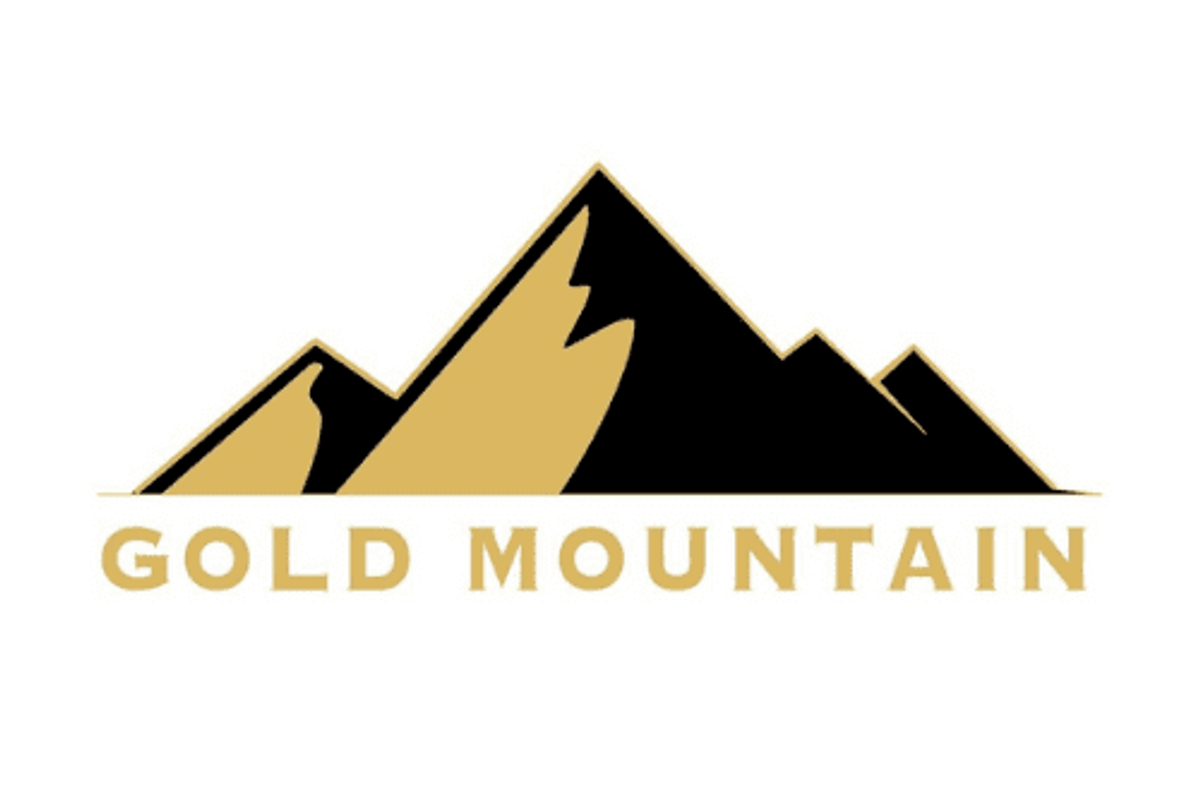
Gold Mountain Mining Corp. ("Gold Mountain" or the "Company") (TSX.V:GMTN, OTCQB:GMTNF, Frankfurt: 5XFA) is pleased to announce an updated National Instrument 43-101 Mineral Resource Estimate following the conclusion of its Phase1 drill program at the Elk Gold Project. An updated technical report will be filed on the Company's website and SEDAR within 45 calendar days of this disclosure
Highlights:
- Gold Mountain increases its resource estimate at its flagship Elk Gold Project to: 651,000 oz of Measured & Indicated Resources at 6.1 g/t Au and 159,000 oz of Inferred resource at 4.8 g/t Au.
- The updated resource estimate represents an increase of 43% of Measure and Indicated ounces and 67% of inferred ounces.
- This update to the mineral resources followed the Company's successful $1,900,000 Phase 1 drill program that consisted of 8,739 metres of diamond drilling where all 41 holes hit mineralization.
Elk Gold Resource Update - Summary
The table below summarizes the updated resource estimate at the Elk Gold Project:
Classification | Tonnes | AuEq (g/t) | Au Capped g/t | Ag Capped g/t | AuEq (Oz) |
Measured | 196,000 | 9.9 | 9.8 | 9.9 | 63,000 |
Indicated | 3,148,000 | 5.8 | 5.7 | 11.2 | 589,000 |
Measured + Indicated | 3,344,000 | 6.1 | 5.9 | 11.1 | 651,000 |
Inferred | 1,029,000 | 4.8 | 4.7 | 10.9 | 159,000 |
CIM definitions were followed for classification of Mineral Resources.
Mineral Resources are not Mineral Reserves and have not demonstrated economic viability.
Results are presented in-situ and undiluted.
Mineral resources are reported at a cut-off grade of 0.3 g/t Au for pit-constrained resources and 3.0 g/t for underground resources.
The number of tonnes and metal ounces are rounded to the nearest thousand.
The Resource Estimate includes both gold and silver assays. The formula used to combine the metals is:
AuEq = ((Au_Cap*55.81*0.96) + (Ag_Cap*0.76*0.86))/(55.81*0.96)
The Resource Estimate is effective as of May 1, 2021.
Elk Gold Project Resource Estimate
The table below sets out the detailed results of the Mineral Resource estimate for Elk Gold Project. The effective date of the resource estimate is May 1, 2021 (the "Resource Estimate").
Classification | Tonnes | Au Equivalent (g/t) | Au Capped (g/t) | Ag Capped (g/t) | AuEq (Oz) |
Elk Gold Pit-Constrained Resources | |||||
Cutoff Au Eq 0.5 g/t | |||||
Measured | 196,000 | 9.9 | 9.8 | 9.9 | 63,000 |
Indicated | 2,835,000 | 5.1 | 5.0 | 9.2 | 468,000 |
Measured + Indicated | 3,031,000 | 5.4 | 5.3 | 9.3 | 531,000 |
Inferred | 835,000 | 3.6 | 3.5 | 6.5 | 96,000 |
Elk Gold Underground Constrained Resources | |||||
Cutoff Au Eq 5.0 g/t | |||||
Measured | 0 | 0 | 0 | 0 | 0 |
Indicated | 313,000 | 12.0 | 11.6 | 29.3 | 120,000 |
Measured + Indicated | 313,000 | 12.0 | 11.6 | 29.3 | 120,000 |
Inferred | 194,000 | 10.1 | 9.9 | 18.5 | 63,000 |
Elk Gold Total Resources | |||||
Cutoff Au Eq 5.0 g/t | |||||
Measured | 196,000 | 9.9 | 9.8 | 9.9 | 63,000 |
Indicated | 3,148,000 | 5.8 | 5.7 | 11.2 | 589,000 |
Measured + Indicated | 3,344,000 | 6.1 | 5.9 | 11.1 | 651,000 |
Inferred | 1,029,000 | 4.8 | 4.7 | 8.8 | 159,000 |
CIM definitions were followed for classification of Mineral Resources.
Mineral Resources are not Mineral Reserves and have not demonstrated economic viability.
Results are presented in-situ and undiluted.
Mineral resources are reported at a cut-off grade of 0.3 g/t Au for pit-constrained resources and 3.0 g/t for underground resources.
The number of tonnes and metal ounces are rounded to the nearest thousand.
The Resource Estimate includes both gold and silver assays. The formula used to combine the metals is:
AuEq = ((Au_Cap*55.81*0.96) + (Ag_Cap*0.76*0.86))/(55.81*0.96)
The Resource Estimate is effective as of May 1, 2021.
Several factors have contributed to the change in this resource estimate from previous estimates. The primary factors affecting that change are the addition of 41 new diamond drill holes, discovery of mineralized intercepts that were not sampled from historical drill cores, changes to the constraining pit shell parameters and changes to the vein model interpretation.
Mineral Resource Estimate Assumptions
Data Verification
The data that forms the basis for the Resource Estimate was verified by the Qualified Person using industry standard methods. Drill hole collar locations were confirmed with independent surveyors' using high precision GPS equipment. Analytical accuracy and precision are monitored using commercial standards, blanks, re-analysis of both coarse rejects and pulps. A review of all data inputs to the drilling database, both historical and recent, has allowed a sufficient level of confidence to include the drill database in the Resource Estimate.
Key Assumptions and Parameters and Methods Used to Estimate Resources
Exploration Information
The data from the 41 Phase 1 drill holes were added to the 2019 drill data for an aggregate total of 973 holes that intersected the 33 modelled mineralized zones. The assay file contained 19,375 gold and silver assays of which 4,389 were contained within the modelled zones.
Grade Capping
A cumulative frequency curve was generated for both gold and silver assay values to determine whether capping of assay values was appropriate. There is a distinct break in the gold assay cumulative frequency curve at 300g/t and that value was taken as the capping value. There were 12 gold assay values over 300g/t. The silver cumulative frequency curve has a break at 400g/t and that value was taken as the capping value. There are 13 samples in the population which were greater than 400g/t silver.
Vein Modelling
The Resource Estimate is constrained to a vein wireframe model which was developed using LeapfrogTM software by clipping the wireframes to a combination of drill hole composites and lithological units.
Metal Equivalency
The Resource Estimate includes both gold and silver assay values and the combined value is expressed as a gold equivalency. The formula by which the two metals are combined is:
AuEq = ((Au_Cap*55.81*0.96) + (Ag_Cap*0.76*0.86))/(55.81*0.96)
The table below provides the metal equivalency calculation parameters.
Parameter | Unit | Value |
Gold Grade | g/t | Variable |
Silver Grade | g/t | Variable |
US$/oz | 1,736 | |
Gold Price | US$/g | 55.81 |
US$/oz | 23.70 | |
Silver Price | US$/g | 0.76 |
Recovery of Gold | % | 0.96 |
Recovery of Silver | % | 0.86 |
Mineral Resource Classification
Mineral resources were classified as Measured, Indicated or Inferred according to the criteria set out in the table below.
Classification on Category | Composites | Major (m) | Median (m) | Minor (m) | ||
Min. | Max. | Max./Holes | ||||
Measured | 8 | 8 | 1 | 25 | 25 | 25 |
Indicated | 4 | 8 | 1 | 60 | 60 | 60 |
Inferred | 2 | 8 | 1 | 80 | 80 | 80 |
Only material in the 1300 vein was allowed to be classified as measured because that is the only zone that has been explored from underground and has provided three-dimensional exposures of the mineralization as well as close-spaced testing by underground drilling.
Reasonable Prospect of Economic Extraction
The open pit portion of the Resource Estimate was constrained by an economic pit shell using the following parameters:
Parameter | Unit | Value |
Gold | US$/oz | 1,736 |
Gold | US$/g | 55.81 |
Silver | US$/oz | 23.75 |
Silver | US$/g | 0.76 |
Exchange Rate | US$:C$ | 0.80 |
Production Rate | t/d | 900 |
Mining Cost | $/t material | 2.70 |
Processing + G&A + Trucking Costs | $/t mineralized material | 21.00 |
Recovery Au | % | 96 |
Recovery Ag | % | 86 |
NSR | % | 2 |
Selling Cost | % | 2 |
Pit Slope | degrees | 50 |
Legal, Political and Environmental risks
There are no known environmental, permitting, legal, title, taxation, socio-economic, marketing, political, or other relevant factors that could materially affect the mineral resource estimate.
Qualified Persons
The foregoing technical information was approved by Grant Carlson, P.Eng., a Qualified Person, as defined under National Instrument 43-101 and the Chief Operating Officer for Gold Mountain Mining Corp.
The technical information relating to the resource estimate was prepared by Greg Mosher P. Geo (Global Mineral Resource Services) a Qualified Person as such term is defined under National Instrument 43-101 who is independent of Gold Mountain.
About Gold Mountain Mining
Gold Mountain is a British Columbia based gold and silver exploration and development company focused on resource expansion at the Elk Gold Project, a past-producing mine located 57 KM from Merritt in SOuth Central British Columbia. Additional information is available at www.sedar.com or on the Company's new website atwww.gold-mountain.ca.
For Further information, please contact
Kevin Smith, Director and Chief Executive Officer
Phone: 604-309-6340
Email: ks@gold-mountain.ca
Website: www.gold-mountain.ca
Neither the TSX Venture Exchange nor its Regulation Services Provider (as that term is defined in the policies of the TSX Venture Exchange) has reviewed or accepts responsibility for the adequacy or accuracy of this Release
This news release includes certain "forward-looking statements" under applicable Canadian securities legislation. Forward- looking statements include statements that are based on assumptions as of the date of this news release and are not purely historical including any information or statements regarding beliefs, plans, expectations or intentions regarding the future and often, but not always, use words or phrases such as "expects" or "does not expect", "is expected", "anticipates" or "does not anticipate", "plans", "estimates" or "intends", or stating that certain actions, events or results "may", "could", "would", "might" or "will" be taken, occur or be achieved.. Forward-looking statements are necessarily based upon a number of estimates and assumptions that, while considered reasonable, are subject to known and unknown risks, uncertainties and other factors which may cause the actual results and future events to differ materially from those expressed or implied by such forward-looking statements. Such factors include, but are not limited to: general business, economic, competitive, political and social uncertainties; delay or failure to receive board, shareholder or regulatory approvals; the price of gold; and the results of current exploration. There can be no assurance that such statements will prove to be accurate as actual results and future events could differ materially from those anticipated in such statements. Accordingly, readers should not place undue reliance on forward-looking statements. Gold Mountain disclaims any intention or obligation to update or revise any forward-looking statements, whether as a result of new information, future events or otherwise, except as required by law. For a comprehensive overview of all risks that may impact the Company, please see the Filing Statement filed on Gold Mountain's SEDAR profile on December 15, 2020.
SOURCE: Gold Mountain Mining Corp
View source version on accesswire.com:
https://www.accesswire.com/647375/Gold-Mountain-Updates-Mineral-Resource-Estimate-at-the-Elk-Gold-Property





